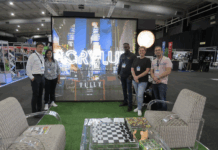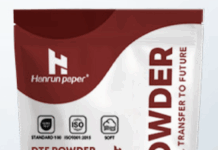Omnivex’s Jennifer Gvozdek, writing for Digital Signage Today, says that from social media posts to online reviews, user generated content (UGC) is a powerful way to enhance brand authenticity, foster community, and drive customer engagement. UGC can transform static screens into dynamic, interactive experiences when integrated with digital signage software.
UGC is any form of content, such as text, images, videos, or reviews, created by users of a system or service. It has become a cornerstone of digital marketing and engagement strategy.
UGC encompasses a wide range of formats, each offering unique opportunities for engagement and interaction. It can be both internal and external to an organisation. Internal UGC can be accessed by integrating digital signage with systems such as Microsoft Office products, Sharepoint, or other internal communications platforms.
Common types of external UGC include social media posts, reviews and testimonials, blog posts and articles, Q&A and forum discussions, polls and surveys, and event coverage.
Each type of UGC can be repurposed for digital signage to create engaging experiences:
Social media posts: Social media platforms like Facebook, Instagram, X, YouTube, and TikTok are popular sources of UGC. Users frequently share photos, videos, status updates, and stories that can be repurposed for digital signage. Hashtags, mentions, and location tags make aggregating and displaying relevant content easy.
Reviews and testimonials: Customer reviews and testimonials are not just invaluable to UGC; they are trust builders. They provide authentic feedback about a product, service, or venue, instilling confidence in potential customers. Displaying positive reviews on digital signage reinforces brand credibility, making an audience feel reassured and confident in their purchasing decisions.
Blog posts and articles: Users who write blog posts or articles about brands’ products or services provide high-quality, in-depth content that is particularly effective for educational or informational displays. They offer detailed insights and personal experiences.
Q&A and forums: content from Q&A sites can be a valuable source of UGC. Displaying frequently asked questions and expert answers can help educate an audience and provide immediate value.
Polls and surveys: results from polls and surveys conducted on a website or social media platforms can be displayed to showcase customer opinions and trends. This type of UGC encourages audience interaction and can provide insights into customer preferences.
Event coverage: user-generated content from events, such as live tweets, photos, and videos, can be displayed in real-time to enhance the event experience. This engages attendees and provides a virtual experience for those who couldn’t attend.
Strategies For Managing UGC
Before collecting UGC, one must consider how to moderate and manage it. Effectively managing UGC on a digital signage network involves several key strategies to ensure content is relevant, engaging, and appropriate. Here are some best practices:
Content Moderation
Moderation is crucial to ensure that the UGC displayed on digital signage is appropriate and aligns with brand values. Implement a moderation process to review and approve content before it goes live. This can be done manually by assigning a team member to review all submissions or through automated tools that filter content based on keywords and other criteria. For instance, one can set up filters to block content that contains profanity or is unrelated to the user’s brand.
Content Scheduling
Scheduling content ensures that digital signage displays fresh and timely UGC. This can be useful for time-sensitive content like event coverage or seasonal promotions.
Audience Targeting
Tailor the UGC displayed on digital signage to the audience. Use demographic and location data to show content that is most relevant to viewers. For example, a retail store might display different UGC in different departments based on the shoppers’ interests in those areas. If there is a digital signage network in multiple locations, one can use location-based targeting to show content specific to each location.
Real-Time Updates
One of the advantages of digital signage is the ability to display real-time content. Use this capability to show live social media feeds, event coverage, and other real-time UGC. This keeps content dynamic and engaging.
Encourage Participation
Run campaigns and contests to encourage audiences to create and share UGC. Use digital signage to promote these initiatives and display submissions. This generates content and fosters a sense of community and engagement.
Legal Considerations
Ensuring you have the necessary permissions to use UGC on your digital signage is not just a formality; it’s required. This may involve seeking user consent or adhering to the platforms’ terms of service from which the content is sourced. Being aware of copyright and privacy laws is essential to avoid legal issues.
Quality Control
Maintain high standards for the quality of UGC displayed on digital signage. Ensure that the content is visually appealing and aligns with brand aesthetics. High-quality content will engage viewers and reflect positively on the brand.
This article appears in Digital Signage Today.















